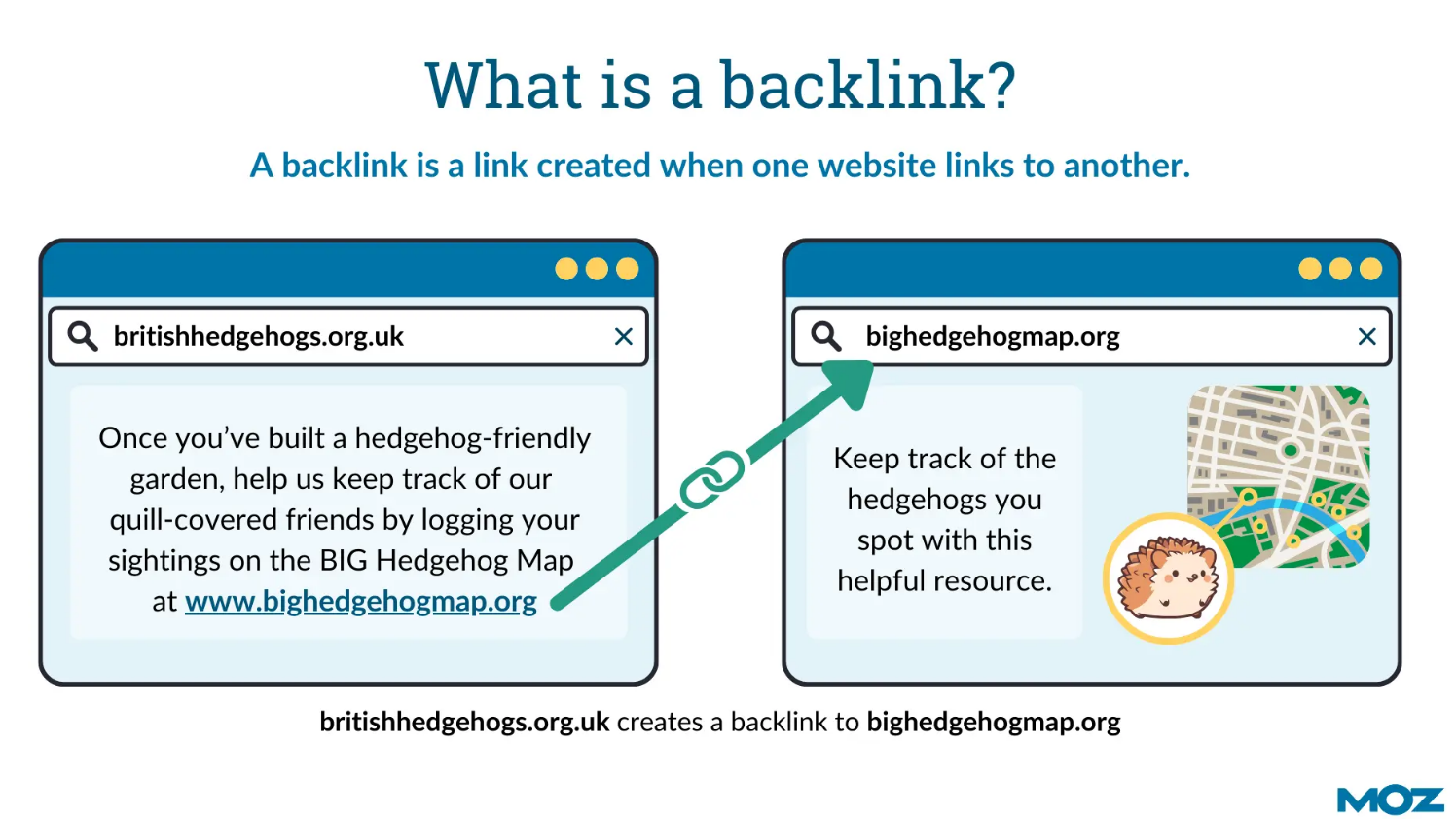
In the fast-paced realm of digital marketing, netlinking reigns supreme as a vital strategy for boosting your website's visibility and authority. But what exactly is netlinking? Simply put, it's the art of securing links from other websites to yours, acting as pathways that not only attract visitors but also tell search engines like Google that your site is relevant, credible, and popular.
We'll dive deep into netlinking essentials, covering everything from understanding the nuances of backlinks to crafting effective strategies and sidestepping common pitfalls. Whether you're a seasoned marketer looking to fine-tune your tactics or a newcomer eager to harness the power of backlinks, this guide offers invaluable insights and actionable techniques to supercharge your netlinking efforts.
Understanding Netlinking
In the digital realm, where websites vie for attention and relevance, understanding the fundamentals of netlinking is paramount. Netlinking, often referred to as link building, is the process of acquiring hyperlinks from other websites to your own. These backlinks serve as pathways that not only drive traffic but also signal to search engines like Google the relevance, credibility, and popularity of your site.
What Are Backlinks?

Backlinks, also known as inbound links or incoming links, are hyperlinks that direct users from one webpage to another. They are essentially votes of confidence from other websites, indicating that your content is valuable and worth referencing. The quality and quantity of backlinks to a website are significant factors in determining its search engine ranking and overall online visibility.
There are certain types of backlinks:
- Natural Links: These are links that occur organically, without any deliberate effort from the website owner. Natural links are typically earned through the publication of high-quality content that other websites find valuable and choose to link to.
- Manual Links: Manual links are acquired through proactive outreach and link-building efforts. This may involve reaching out to webmasters, bloggers, or influencers to request a link to your content.
- Self-created Links: These links are generated by the website owners themselves, often through methods such as forum signatures, blog comments, or directory submissions. While self-created links can be a part of a comprehensive netlinking strategy, they are generally considered less valuable than organic or manually acquired links.
The Role of Anchor Text in Netlinking
Anchor text is the clickable text in a hyperlink that users see on a webpage. It plays a crucial role in netlinking as it provides context to both users and search engines about the content of the linked page. Optimizing anchor text with relevant keywords can help improve the ranking of the linked page for those keywords. However, it's essential to maintain a natural and diverse anchor text profile to avoid over-optimization penalties from search engines.
Importance of Link Relevancy and Authority
In addition to quantity, the quality of backlinks is a critical factor in netlinking success. Search engines place a higher value on links from authoritative websites within the same industry or niche. These links are seen as more relevant and trustworthy, thus contributing more positively to a website's search engine ranking.
Conversely, links from low-quality or irrelevant websites can have a detrimental effect on a site's credibility and visibility. Therefore, it's essential to prioritize acquiring links from reputable sources that are closely related to your own website's content and subject matter.
The Foundation of Quality Netlinking
Before diving into the intricacies of netlinking strategies, it's crucial to establish a solid foundation that will set the stage for success. Building quality backlinks requires a strategic approach, meticulous planning, and a deep understanding of your website's current link profile and objectives.
Website Audit for Link Profile Analysis
- Tools for Auditing: Utilize powerful tools such as SEMrush, Ahrefs, or Moz to conduct a comprehensive audit of your website's link profile. These tools provide valuable insights into the quantity, quality, and diversity of your backlinks, as well as identify any potential issues such as toxic or spammy links.
- Identifying Toxic Backlinks: Weed out toxic backlinks that could harm your website's reputation and search engine ranking. Look for links from low-quality or suspicious websites, as well as those with over-optimized anchor text or a high spam score.
- Assessing Anchor Text Diversity: Analyze the anchor text distribution of your backlinks to ensure a natural and diverse profile. Avoid over-reliance on exact-match anchor text, as this can trigger Google's algorithmic penalties for over-optimization.
Establishing Clear Netlinking Goals
Define clear and measurable goals for your netlinking efforts, whether it's increasing organic traffic, improving search engine ranking, or enhancing brand visibility. By setting specific objectives, you can tailor your netlinking strategy to align with your broader business objectives and track progress more effectively.
Understanding Google's Link Quality Guidelines
Familiarize yourself with Google's guidelines for link quality to ensure compliance and mitigate the risk of penalties. Google places great emphasis on natural, relevant, and authoritative backlinks while penalizing manipulative or spammy link-building practices. By adhering to these guidelines, you can build a sustainable netlinking strategy that withstands algorithmic updates and maintains long-term success.
By laying a strong foundation through website auditing, goal-setting, and adherence to Google's guidelines, you set the stage for effective netlinking campaigns that drive tangible results for your website's growth and visibility.
Best Practices for Netlinking Success
Diversifying Anchor Text and Link Sources
In the realm of netlinking, diversity is key to maintaining a natural and sustainable backlink profile. This principle extends not only to the types of links acquired but also to the anchor text used in those links.
- Vary Anchor Text: Avoid over-optimization by diversifying anchor text across your backlink profile. Instead of solely relying on exact-match keywords, incorporate variations such as branded terms, partial matches, and generic phrases. This helps create a more natural link profile and reduces the risk of triggering Google's algorithmic penalties.
- Use Semantic Keywords: Embrace semantic keywords that are contextually relevant to your content and target audience. By incorporating synonyms, related terms, and long-tail variations into your anchor text, you broaden the scope of your netlinking efforts and enhance the overall relevance and authority of your website.
- Leverage Co-Citation and Co-Occurrence: Beyond traditional anchor text links, explore opportunities for co-citation and co-occurrence. Co-citation occurs when your website is mentioned alongside competitors or related entities, while co-occurrence refers to the contextual association of keywords and phrases within the content. These indirect forms of linking can still contribute to your website's authority and relevance in the eyes of search engines.
- Explore Alternative Link Sources: While traditional methods such as guest posting and outreach campaigns are effective, don't overlook alternative sources for acquiring backlinks. Consider opportunities for collaboration with industry partners, participation in forums and communities, or inclusion in curated lists and resource pages. By diversifying your link sources, you mitigate the risk of dependency on a single strategy and increase the resilience of your netlinking efforts.
Prioritizing Quality Over Quantity
While it may be tempting to pursue a high volume of backlinks in pursuit of improved search engine ranking, focusing on the quality of those links is paramount for sustainable and long-term success.
- Focus on Relevance and Authority: When acquiring backlinks, prioritize websites that are relevant to your niche or industry and demonstrate authority and credibility in their respective fields. Links from reputable and trustworthy sources carry more weight in the eyes of search engines and are more likely to positively impact your website's visibility and ranking.
- Evaluate Link Quality Metrics: Instead of fixating solely on the number of backlinks acquired, pay close attention to metrics that indicate the quality of those links. Assess factors such as domain authority, page authority, trust flow, and citation flow to gauge the value and authority of potential linking domains. Quality metrics provide a more nuanced understanding of the impact that backlinks can have on your website's overall SEO performance.
- Prioritize Editorial Links: Editorial links, also known as natural or organic links, are those that are voluntarily placed by website owners or content creators based on the merit and relevance of your content. These links are highly valued by search engines as they are seen as unbiased endorsements of your website's authority and credibility. Prioritize building relationships with publishers and influencers who are likely to provide editorial links based on the quality of your content.
- Avoid Spammy or Manipulative Tactics: In the pursuit of backlinks, steer clear of spammy or manipulative tactics that may offer short-term gains but pose long-term risks to your website's reputation and visibility. Tactics such as buying links, participating in link schemes, or engaging in excessive link exchanges violate Google's guidelines and can result in penalties that harm your website's ranking.
Monitoring and Analyzing Backlink Performance

Monitoring and analyzing the performance of your backlinks are essential steps in optimizing your netlinking strategy and maximizing its impact on your website's visibility and ranking. By closely tracking key metrics and performance indicators, you can identify strengths, weaknesses, and areas for improvement, enabling you to refine your approach and achieve better results over time.
- Use Tracking Tools: Leverage a variety of tracking tools and analytics platforms to monitor the performance of your backlinks. Tools such as Google Search Console, Moz, Ahrefs, and SEMrush offer valuable insights into metrics such as the number of backlinks, referring domains, anchor text distribution, and changes in search visibility over time.
- Assess Link Quality: Regularly assess the quality and relevance of your backlinks to ensure they align with your netlinking goals and adhere to Google's guidelines. Look for signs of spammy or low-quality links, such as a high spam score, irrelevant anchor text, or links from suspicious domains. Disavow or remove toxic links that could harm your website's reputation and ranking.
- Track Referral Traffic: Monitor referral traffic from backlinks to identify which sources are driving the most valuable visitors to your website. Analyze factors such as bounce rate, time on page, and conversion rate to gauge the quality and engagement level of traffic generated by specific backlinks. Use this data to prioritize high-performing sources and tailor your netlinking efforts accordingly.
- Adjust Strategies Based on Performance: Based on your analysis of backlink performance metrics, adjust your netlinking strategies and tactics as needed to optimize results. Experiment with different outreach methods, content formats, and target audiences to identify what resonates most effectively with your audience and generates the highest return on investment.
Staying Updated with Google's Algorithm Changes and Guidelines
Google regularly updates its algorithms to improve search results and combat spammy or manipulative tactics, which can have significant implications for your website's ranking and visibility.
- Follow Official Communications: Stay informed about Google's algorithm updates and guidelines by following official communications from Google, such as announcements on the Google Webmaster Central Blog, Google Search Central YouTube channel, and official social media channels. These platforms provide valuable insights into upcoming changes and best practices for optimizing your website's performance.
- Monitor Industry News and Updates: Keep tabs on industry news, forums, and communities to stay informed about emerging trends, best practices, and case studies related to netlinking and search engine optimization. Engage with fellow professionals, attend conferences, and participate in webinars to expand your knowledge and stay ahead of the curve in a rapidly evolving landscape.
- Adapt and Evolve Strategies: As Google's algorithms evolve and new guidelines are introduced, be prepared to adapt and evolve your netlinking strategies accordingly. Continuously assess the impact of algorithm changes on your website's performance and adjust your tactics to align with Google's evolving expectations and standards. By remaining agile and proactive, you can position your website for sustained success in the dynamic world of search engine optimization.
Summing Up
By laying a solid foundation through website audits, goal-setting, and adherence to Google's guidelines, you set the stage for impactful netlinking campaigns that drive tangible results. By prioritizing quality, relevance, and integrity in your netlinking efforts, you can unlock the full potential of your website and achieve lasting success in the competitive digital marketplace.




